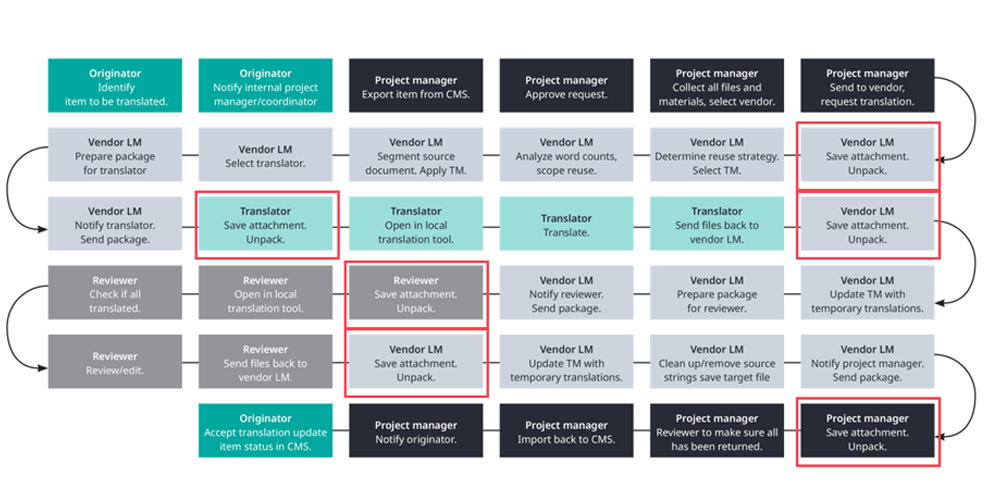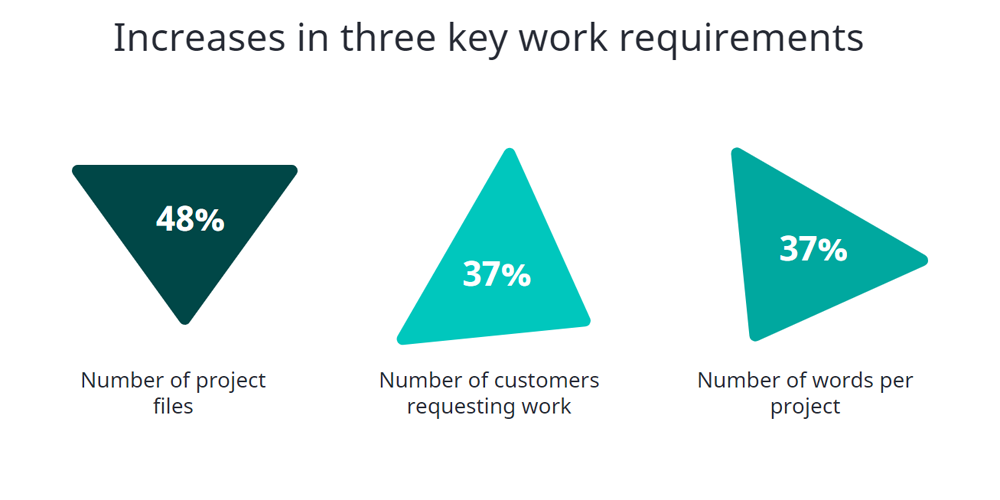From chaos to clarity: The solution for localization project management


In today’s digital era, companies are increasingly embracing online platforms to sell and promote their products and services and reach a broader audience than ever before. However, the ease and speed of producing digital content translates to a significant increase in the volume of content that needs to be localized, which was evident in our Translation technology insights 2023 report. Below you can see in which areas many corporates, LSPs and translators are seeing the biggest increase.

With these increases in industry pressures, the only way this demand can realistically be met is through the proper implementation of a modern translation management system.
Benefits of Trados technology
Now, let’s shift our focus to an innovative solution that has transformed the landscape of localization project management: Trados. As a leading TMS in the industry, Trados offers a comprehensive suite of features and capabilities designed to streamline the localization process.
1. Consistency with easy sharing of translation assets
As a project manager, whether you work within an organization or with external clients, consistency is key. Trados features such as online termbases and translation memory (TM) which can be accessed by translators and updated in real time can help your team achieve much more accurate and consistent translations.
2. Increase productivity and save substantial amounts of time
Trados significantly reduces the time spent managing localization projects. For instance, the manual process of contacting translators and assigning work, which often involves lengthy email exchanges for each language and project, becomes streamlined. Whether you manage 5 or 50 teams, Trados automates assignments with a simple click, eliminating the time wasted in identifying translators for new assignments.
Additionally, the cloud environment enables easy online editing and review by allowing reviewers or subject matter experts to comment on projects, saving you from having to extract the content from CAT tools and manually send it to them.
3. Track and report on key metrics
As a project manager, keeping track of metrics and KPIs is essential for forward planning and reporting back to clients. Trados helps you identify working trends, such as bottlenecks, which can improve planning and client communication. What’s more, your clients or the departments you work with can trust that human error is out of the equation when it comes to reporting, since that’s done automatically by the TMS.
In addition to solving the challenges for project managers already listed, with Trados you can be sure to:
Become more productive
Trados comes with a variety of features that were built with your productivity in mind. Everything you need is on one platform, from termbases to all the various projects you’re overseeing. And the same can be said about your translators or reviewers – saving you from having to tediously save file versions and notify stakeholders of the latest updates.
Gain peace of mind
With Trados, you can rest easy knowing that your project isn’t going anywhere. If somebody on your team is not available, there’s always a way to track/access the files online. With Trados, you can also control who has access to translations assets and for how long thanks to a centrally secure environment.
And that wraps it up – a brief overview of how Trados can simplify the localization project management experience. If you’d like to see it for yourself, watch our free webinar recording in which Roman Jhukov, Language Technology Consultant, takes you through the many features of Trados. This demo provides valuable insights into how Trados is used by localization experts for a more streamlined localization project management experience.
If you’ve got any questions about Trados and how it can support you, please get in touch here.

